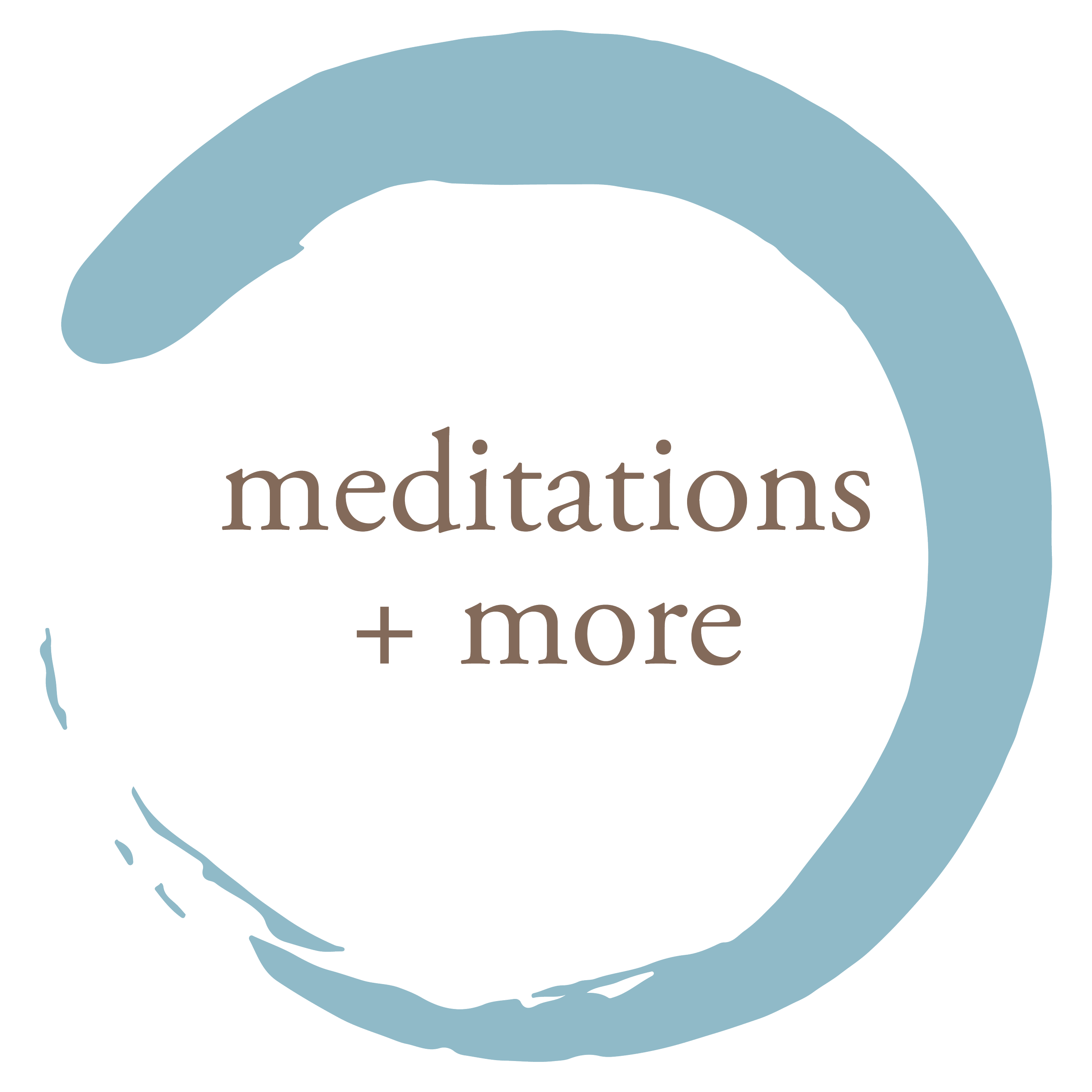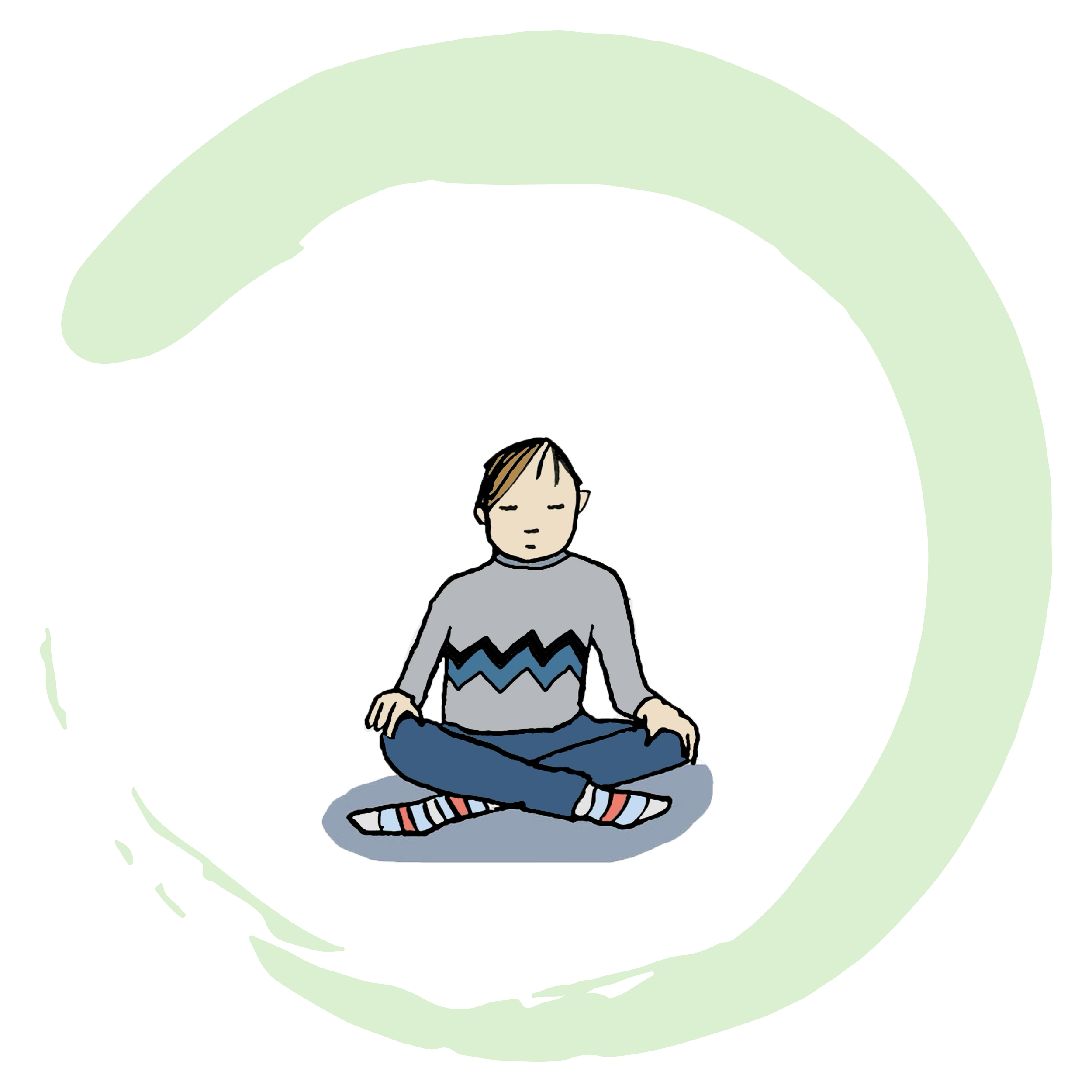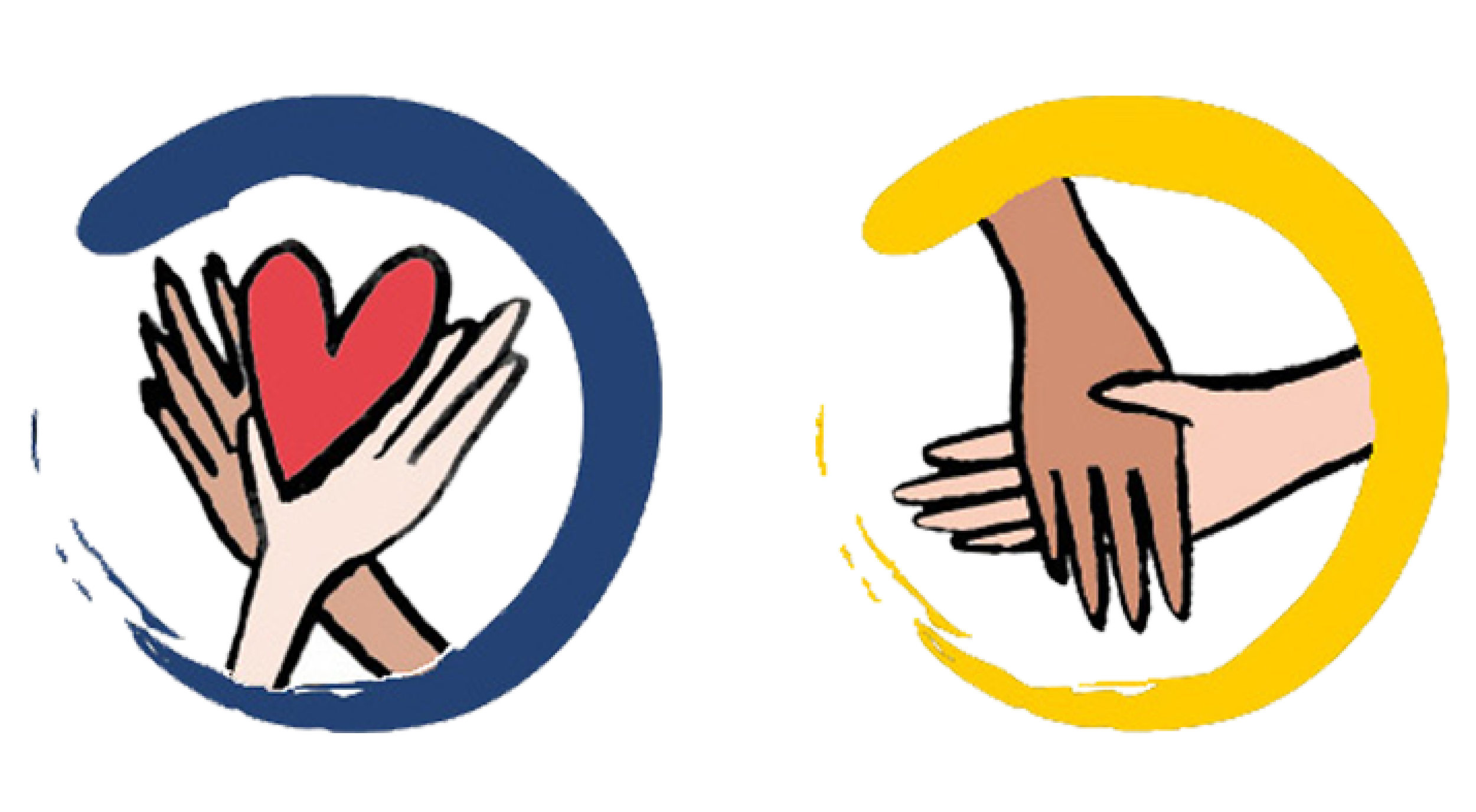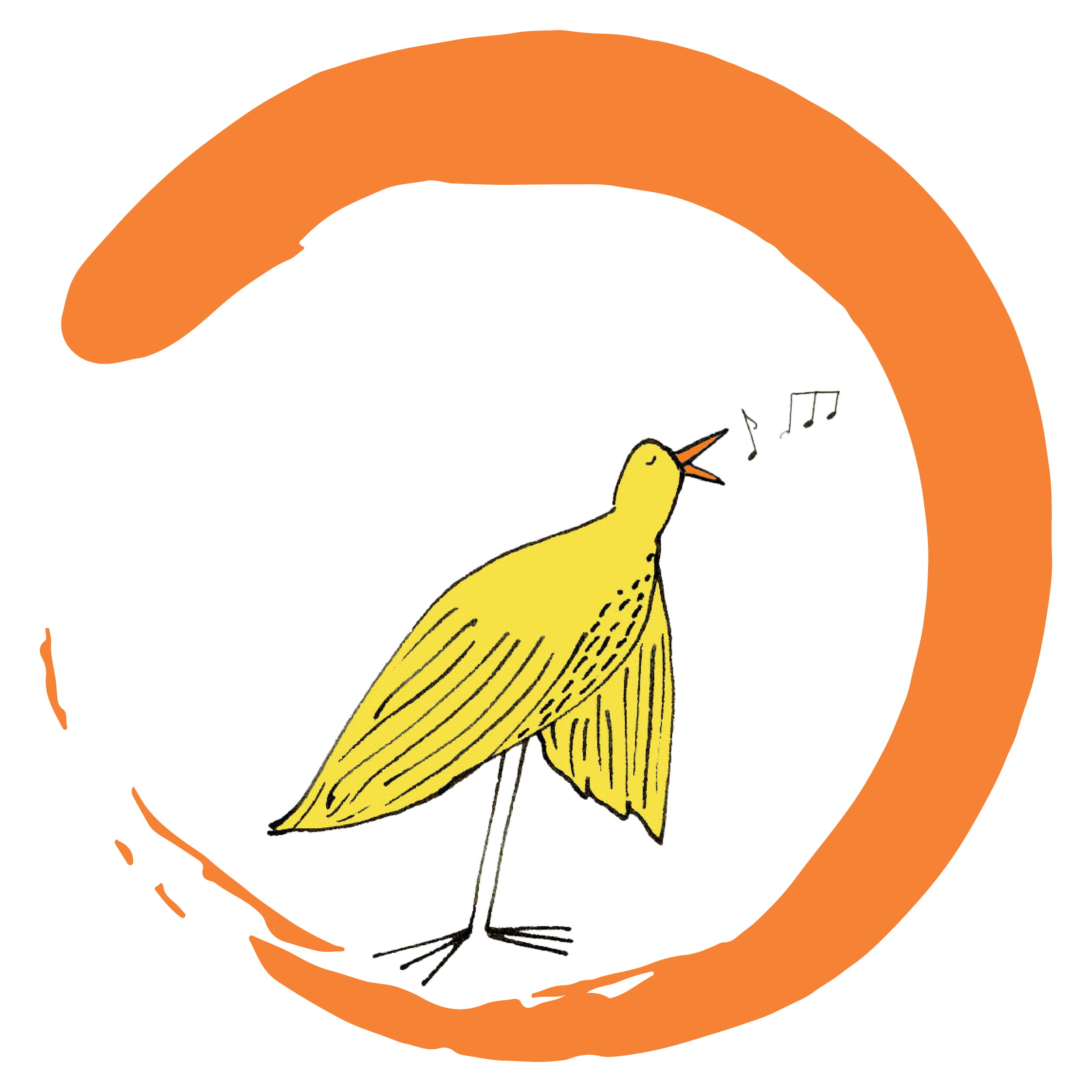
meditations + more for kids
These meditations and lessons are designed to help kids with a variety of mindfulness-building activities. Whether you're hoping to help your child with listening skills, relaxation, attention, reframing, or even connecting, you will find some excellent resources here. To help you find what you're looking for, we've sorted these guided meditations and lessons by both the child's age and by the life skills that the meditation or lesson develops.

-
Designed for pre-k through early elementary-age children, but don’t be surprised if older kids enjoy them too!
-
Designed for mid-to-late elementary-age children, but don’t be surprised if younger and older kids enjoy them too!
-
Designed for middle-to-high-school-age kids, but don’t be surprised if elementary-age children and adults find them helpful too!
-
Steady, flexible attention develops our capacity to focus and quiet our minds and bodies.
-
Balance enhances our capacity to see and reframe our situations.
-
Speaking, acting, and relating to others (and ourselves) with compassion develops our capacity to care and connect.
-
One of the most effective ways to remember new information & become fully present is music. Check out our collection.

for younger children
These meditations and lessons are designed for pre-k through early elementary age children, but don’t be surprised if older kids enjoy them too!
You can train your mind to pay attention to even the littlest things. Like sounds. Enhance your awareness, deepen empathy, and bring more presence to your interactions. Ideal for both beginners and experienced meditators.
We imagine that everyone has a special star with them all the time and learn how just imagining it can help us feel more relaxed and calm.
We play three mindful games in a row to practice paying attention while moving and having fun.
We learn that focusing on a long out-breath can help us feel more relaxed and calm.
We blow on a pinwheel to notice that different ways of breathing—quick, slow, deep, and shallow—affect how our minds and bodies feel.
We shake a glitter ball or snow globe to help us understand the connection between what happens in our minds and what happens in our bodies.
We imagine biting into a lemon to help us understand the connection between what’s happening in our minds and what’s happening in our bodies.
Enjoy the timeless folk song My Peace by Woody and Arlo Guthrie, performed by Gabe Greenland. This classic tune inspires inner and outer peace, making it perfect for children of all ages to connect with mindfulness and calm through music.
Learn this beautiful folk song for children of all ages, shared by Tom Nolan from the Crossroads School and the Council in the Schools program. With lyrics encouraging connection to inner freedom and guidance, it’s a heartfelt way to explore mindfulness through music.
Teach children the calming power of mindful breathing with this engaging song. Through music, kids learn how pausing to feel their breath helps them feel more focused and relaxed. Perfect for introducing mindfulness in a fun and accessible way.
Affectionately called "Breathe In, Breathe Out," this song by Sarah Dan Jones, arranged and performed by Gabe Greenland, helps children calm down, improve focus, or simply enjoy a moment of mindfulness. A soothing and fun way to practice mindful breathing through music.
In this 6-minute guided practice from Susan Kaiser Greenland, children listen to the rain and pay attention to the changing nature of the sounds, breathing, thoughts, and feelings.
In this 6-minute guided practice from Susan Kaiser Greenland, we pretend to rock a stuffed animal to sleep on our bellies to relax our bodies and quiet our minds. As we breathe in, the animal rocks up; as we breathe out, the animal rocks back down.

for older children
These meditations and lessons are designed for mid-to-late elementary age children, but don’t be surprised if younger and older kids enjoy them too!
You can train your mind to pay attention to even the littlest things. Like sounds. Enhance your awareness, deepen empathy, and bring more presence to your interactions. Ideal for both beginners and experienced meditators.
In this seven-minute guided practice, children and teens get comfortable, relax, and gaze at the sky to explore what’s happening within and around them.
We learn that focusing on a long out-breath can help us feel more relaxed and calm.
We imagine biting into a lemon to help us understand the connection between what’s happening in our minds and what’s happening in our bodies.
Enjoy the timeless folk song My Peace by Woody and Arlo Guthrie, performed by Gabe Greenland. This classic tune inspires inner and outer peace, making it perfect for children of all ages to connect with mindfulness and calm through music.
Learn this beautiful folk song for children of all ages, shared by Tom Nolan from the Crossroads School and the Council in the Schools program. With lyrics encouraging connection to inner freedom and guidance, it’s a heartfelt way to explore mindfulness through music.
Teach children the calming power of mindful breathing with this engaging song. Through music, kids learn how pausing to feel their breath helps them feel more focused and relaxed. Perfect for introducing mindfulness in a fun and accessible way.
Affectionately called "Breathe In, Breathe Out," this song by Sarah Dan Jones, arranged and performed by Gabe Greenland, helps children calm down, improve focus, or simply enjoy a moment of mindfulness. A soothing and fun way to practice mindful breathing through music.
We listen to the sound of the rain and remember that everything changes. A 6-minute guided meditation for all ages.
In this 6-minute guided practice from Susan Kaiser Greenland, children listen to the rain and pay attention to the changing nature of the sounds, breathing, thoughts, and feelings.

for teens
These meditations and lessons are esigned for middle-to-high school age kids, but don’t be surprised if elementary age children and adults find them helpful too!
Discover the calming power of sound awareness in this six-minute guided meditation. Perfect for teenagers and adults, this live recording from a webinar for parents helps you pause and tune into the sounds within and around you, offering a practical alternative to mindful breathing during intense emotions.
Life has a way of throwing curve balls and it’s up to us how we respond. What would happen if we loosened our grip instead of clamping down?
In this seven-minute guided practice, children and teens get comfortable, relax, and gaze at the sky to explore what’s happening within and around them.
We think of things we have in common with someone who seems different than us and silently say, “he or she is just like me.”
In this 10-minute guided practice with Susan Kaiser Greenland, we notice how our minds and bodies feel when we stop, breathe, and be.
We listen to the sound of the rain and remember that everything changes. A 6-minute guided meditation for all ages.

focusing + quieting
Steady, flexible attention develops our capacity to focus and quiet our minds and bodies. The six social, emotional, & academic life skills that mindfulness builds are symbiotic, though, and as children develop in one area, they also develop in others.
We imagine that everyone has a special star with them all the time and learn how just imagining it can help us feel more relaxed and calm.
We play three mindful games in a row to practice paying attention while moving and having fun.
We learn that focusing on a long out-breath can help us feel more relaxed and calm.
We blow on a pinwheel to notice that different ways of breathing—quick, slow, deep, and shallow—affect how our minds and bodies feel.
We shake a glitter ball or snow globe to help us understand the connection between what happens in our minds and what happens in our bodies.
Enjoy the timeless folk song My Peace by Woody and Arlo Guthrie, performed by Gabe Greenland. This classic tune inspires inner and outer peace, making it perfect for children of all ages to connect with mindfulness and calm through music.
Teach children the calming power of mindful breathing with this engaging song. Through music, kids learn how pausing to feel their breath helps them feel more focused and relaxed. Perfect for introducing mindfulness in a fun and accessible way.
Affectionately called "Breathe In, Breathe Out," this song by Sarah Dan Jones, arranged and performed by Gabe Greenland, helps children calm down, improve focus, or simply enjoy a moment of mindfulness. A soothing and fun way to practice mindful breathing through music.
In this 10-minute guided practice with Susan Kaiser Greenland, we notice how our minds and bodies feel when we stop, breathe, and be.
In this 6-minute guided practice from Susan Kaiser Greenland, children listen to the rain and pay attention to the changing nature of the sounds, breathing, thoughts, and feelings.
In this 6-minute guided practice from Susan Kaiser Greenland, we pretend to rock a stuffed animal to sleep on our bellies to relax our bodies and quiet our minds. As we breathe in, the animal rocks up; as we breathe out, the animal rocks back down.

seeing & reframing
Balance enhances our capacity to see and reframe our situations. The six social, emotional, & academic life skills that mindfulness builds are symbiotic, though, and as children develop in one area, they also develop in others.
You can train your mind to pay attention to even the littlest things. Like sounds. Enhance your awareness, deepen empathy, and bring more presence to your interactions. Ideal for both beginners and experienced meditators.
Discover the calming power of sound awareness in this six-minute guided meditation. Perfect for teenagers and adults, this live recording from a webinar for parents helps you pause and tune into the sounds within and around you, offering a practical alternative to mindful breathing during intense emotions.
Life has a way of throwing curve balls and it’s up to us how we respond. What would happen if we loosened our grip instead of clamping down?
We imagine biting into a lemon to help us understand the connection between what’s happening in our minds and what’s happening in our bodies.
Learn this beautiful folk song for children of all ages, shared by Tom Nolan from the Crossroads School and the Council in the Schools program. With lyrics encouraging connection to inner freedom and guidance, it’s a heartfelt way to explore mindfulness through music.
We think of things we have in common with someone who seems different than us and silently say, “he or she is just like me.”
In this 10-minute guided practice with Susan Kaiser Greenland, we notice how our minds and bodies feel when we stop, breathe, and be.
We listen to the sound of the rain and remember that everything changes. A 6-minute guided meditation for all ages.

caring & connecting
Speaking, acting, and relating to others (and ourselves) with compassion develops our capacity to care and connect. The six social, emotional, & academic life skills that mindfulness builds are symbiotic, though, and as children develop in one area, they also develop in others.
In this seven-minute guided practice, children and teens get comfortable, relax, and gaze at the sky to explore what’s happening within and around them.
Discover a lively and engaging folk song perfect for children! Shared by Tom Nolan from the Crossroads School and the Council in the Schools program, this playful tune brings joy and connection to young listeners.
We think of things we have in common with someone who seems different than us and silently say, “he or she is just like me.”

songs
Music is one of the best ways to introduce new ideas, connect emotionally, and reinforce core concepts. Check out these lovely and fun songs with your elementary-age children.
Discover a lively and engaging folk song perfect for children! Shared by Tom Nolan from the Crossroads School and the Council in the Schools program, this playful tune brings joy and connection to young listeners.
Enjoy the timeless folk song My Peace by Woody and Arlo Guthrie, performed by Gabe Greenland. This classic tune inspires inner and outer peace, making it perfect for children of all ages to connect with mindfulness and calm through music.
Learn this beautiful folk song for children of all ages, shared by Tom Nolan from the Crossroads School and the Council in the Schools program. With lyrics encouraging connection to inner freedom and guidance, it’s a heartfelt way to explore mindfulness through music.
Teach children the calming power of mindful breathing with this engaging song. Through music, kids learn how pausing to feel their breath helps them feel more focused and relaxed. Perfect for introducing mindfulness in a fun and accessible way.
Affectionately called "Breathe In, Breathe Out," this song by Sarah Dan Jones, arranged and performed by Gabe Greenland, helps children calm down, improve focus, or simply enjoy a moment of mindfulness. A soothing and fun way to practice mindful breathing through music.


